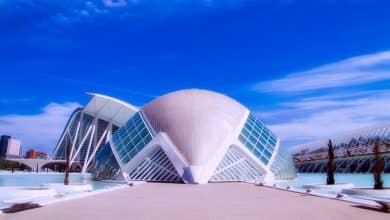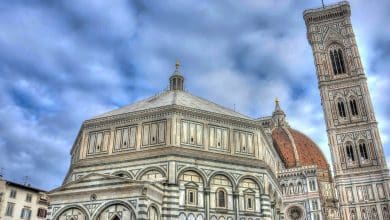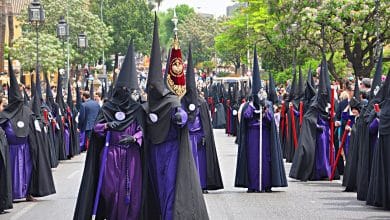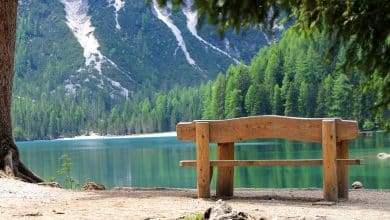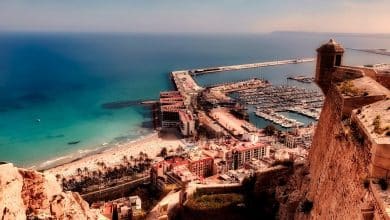Salamanca tourist attractions and things to do

Salamanca, a city in western Spain, is renowned for its stunning architecture and rich cultural heritage. Visitors can admire the ornate facades of the Old Cathedral and the New Cathedral, both of which are UNESCO World Heritage Sites. The Plaza Mayor, one of the most beautiful squares and tourist attractions in Spain, is also a must-see attraction. Other popular sights include the University of Salamanca, one of the oldest in Europe, and the Casa de las Conchas, a 15th-century building decorated with over 300 shells.
Plaza Mayor
Plaza Mayor is the main square of Salamanca, located in the heart of the city’s old town. It is considered one of the most beautiful plazas in Spain and is a popular destination for both tourists and locals. The square is surrounded by impressive architecture, including the town hall, several cafes, and shops. The plaza is a great place to relax, people watch, and enjoy a coffee or a meal at one of the many outdoor terraces. The square also hosts many events throughout the year, such as live music and traditional festivals. The Plaza Mayor is a must-see attraction for anyone visiting Salamanca, and it is definitely the most iconic and popular place in the city.
Catedral Nueva
Catedral Nueva, also known as Santa Maria del Campo, is a Gothic style cathedral located in the heart of Salamanca. It is one of two cathedrals in the city and is known for its intricate stone carvings, stunning stained-glass windows, and beautiful cloisters. The construction of the cathedral began in the 14th century and was completed in the 18th century. Inside the cathedral, visitors can see the high altar, chapels, and a museum with art and religious artifacts. The Cathedral Nueva is a must-see attraction for anyone interested in Gothic architecture and religious history. It is also a UNESCO World Heritage Site, and one of the most important monuments in Salamanca.
Catedral Vieja
Catedral Vieja, also known as Santa Maria la Mayor, is a Romanesque-style cathedral located in the heart of Salamanca. It is one of two cathedrals in the city and is known for its intricate stone carvings, beautiful frescoes and a collection of art and religious artifacts. The construction of the cathedral began in the 12th century and was completed in the 13th century. Inside the cathedral, visitors can see the high altar, chapels, and the famous “frog” sculpture on the facade. The Cathedral Vieja is a must-see attraction for anyone interested in Romanesque architecture and religious history. It is also a UNESCO World Heritage Site, and one of the most important monuments in Salamanca.
Casa de las Conchas
Casa de las Conchas is a 15th century building located in the heart of Salamanca’s old town. It is known for its unique exterior, which is covered in more than 300 shells. The house was built by a knight of the Order of Santiago and the shells on the facade are said to symbolize his devotion to the order. Inside the house, visitors can see a small museum displaying the history of the building and its former residents. The Casa de las Conchas is a popular attraction for visitors to Salamanca, and its unique exterior makes it a great place for photographs. It is a great example of the city’s rich cultural heritage, and a must-see attraction for anyone visiting the city.
Universidad de Salamanca
Universidad de Salamanca is one of the oldest universities in Europe, and one of the most prestigious in Spain. It was founded in 1218 and has a long history of academic excellence. The university’s main campus is located in the heart of Salamanca’s old town, and its buildings are a blend of different architectural styles including Gothic, Renaissance, and Baroque. Visitors can take a tour of the university’s historic buildings, including the main hall, the library, and the clock tower. The university also has a museum displaying art and scientific artifacts from its long history. The University of Salamanca is a must-see attraction for anyone interested in education and history, and it is also a UNESCO World Heritage Site, reflecting the importance of the University in the cultural heritage of Spain.
Convento de San Esteban
Convento de San Esteban is a 16th century monastery located in the heart of Salamanca’s old town. It was founded by the order of the Dominicans, and it is known for its impressive architecture, beautiful cloisters and its rich history. Visitors can take a tour of the monastery and see the church, the chapter house, the refectory and the monk’s cells. The Convent also houses a museum displaying art and religious artifacts. The Convento de San Esteban is a popular attraction for visitors to Salamanca, and its peaceful atmosphere makes it a great place to escape the hustle and bustle of the city. It is also a UNESCO World Heritage Site, reflecting the importance of the Convent in the cultural heritage of Spain.
Palacio de Monterrey
Palacio de Monterrey is a 16th century palace located in Salamanca, Spain. It is known for its Renaissance-style architecture and its beautiful gardens. The palace was built by the Duke of Alba, and it is now open to the public as a museum. Visitors can take a tour of the palace and see the various rooms, including the chapel, the dining room, and the bedrooms. The palace also has a collection of art and antiques on display. The Palacio de Monterrey is a popular attraction for visitors to Salamanca, and its beautiful gardens make it a great place to relax and enjoy the beautiful views of the city. It is also a great place to learn about the history of the city and its noble families.
Iglesia de San Martín
Iglesia de San Martín is a 12th century church located in the heart of Salamanca’s old town. It is known for its Romanesque architecture and its beautiful frescoes. The church was built by the Knights Templar, and it is one of the oldest buildings in the city. Visitors can take a tour of the church and see the various architectural elements, including the apse, the nave and the tower. The church has several chapels dedicated to different saints and it also has a collection of art and religious artifacts. The frescoes are the most outstanding feature of the church, they are considered some of the best examples of Romanesque frescoes in Spain. The Iglesia de San Martín is a must-see attraction for anyone interested in religious history and Romanesque architecture.
Palacio Fonseca
Palacio Fonseca is a 16th century palace located in Salamanca, Spain. It is known for its Renaissance-style architecture and its beautiful gardens. The palace was built by the Fonseca family, one of the most important noble families in the city. Visitors can take a tour of the palace and see the various rooms, including the chapel, the dining room, and the bedrooms. The palace also has a collection of art and antiques on display, including a collection of Flemish tapestries. The Palacio Fonseca is a popular attraction for visitors to Salamanca, and its beautiful gardens make it a great place to relax and enjoy the beautiful views of the city. It is also a great place to learn about the history of the city and its noble families.
Convento de las Dueñas
Convento de las Dueñas is a 15th century convent located in the heart of Salamanca’s old town. It was founded by the order of the Franciscans, and it is known for its beautiful Renaissance-style architecture, peaceful gardens and its rich history. Visitors can take a tour of the convent and see the church, the cloisters, the refectory and the monk’s cells. The Convent also houses a museum displaying art and religious artifacts. The Convento de las Dueñas is a popular attraction for visitors to Salamanca, and its peaceful atmosphere makes it a great place to escape the hustle and bustle of the city. It is also a great place to learn about the history of the city and the role of the monasteries in the cultural heritage of Spain.
Parador de Salamanca
Parador de Salamanca is a luxurious hotel located in a 16th century palace in the heart of Salamanca’s old town. The palace was built for a noble family, and it has been beautifully restored to maintain its historic character while providing modern amenities. The hotel features elegant rooms and suites, many with original features such as frescoes and wooden beams. Guests can enjoy a meal in the hotel’s restaurant which serves traditional Spanish cuisine. The hotel also has a spa and a fitness center. The Parador de Salamanca is a great place to stay for those who want to experience the history and culture of the city while enjoying the comfort and luxury of a high-end hotel.
Iglesia de la Clerecía
Iglesia de la Clerecía is a 18th century church located in the heart of Salamanca’s old town. It is known for its Baroque-style architecture and its beautiful frescoes. The church was built for the clergy, and it is one of the most important religious buildings in the city. Visitors can take a tour of the church and see the various architectural elements, including the altar, the nave, and the tower. The church has several chapels dedicated to different saints and it also has a collection of art and religious artifacts. The frescoes are the most outstanding feature of the church, they are considered some of the best examples of Baroque frescoes in Spain. The Iglesia de la Clerecía is a must-see attraction for anyone interested in religious history and Baroque architecture.
Museo de Art Nouveau y Art Déco
The Museo de Art Nouveau y Art Déco is a museum located in Salamanca, Spain. It is dedicated to showcasing the art and design of the Art Nouveau and Art Deco movements. The museum has a collection of furniture, ceramics, glass, metalwork, and other decorative arts from the late 19th and early 20th century. Visitors can take a tour of the museum and see the various exhibits, including the works of famous artists and designers of the period. The museum also has a library and an auditorium where conferences and lectures are held. The Museo de Art Nouveau y Art Déco is a must-see attraction for anyone interested in art and design history, and it is also a great place to appreciate the beauty and elegance of these two movements.
Museo de Salamanca
The Museo de Salamanca is a museum located in Salamanca, Spain. It is dedicated to showcasing the history, art, and culture of the city and its region. The museum has a collection of artifacts, artworks and manuscripts, dating from prehistory to the present day, which cover the history of the city and its region. Visitors can take a tour of the museum and see the various exhibits, including Roman and Visigothic remains, medieval and Renaissance art, as well as a section dedicated to the contemporary art. The museum also has a library and an auditorium where lectures and conferences are held. The Museo de Salamanca is a must-see attraction for anyone interested in the history and culture of the city, and it is also a great way to discover the rich heritage of Salamanca.
Mirador del Tormes.
Mirador del Tormes is a viewpoint located in Salamanca, Spain. It offers a panoramic view of the city and the Tormes river. It is a great place to appreciate the beauty of the city and its surroundings. Visitors can take a walk around the viewpoint and take in the views of the city, the river, and the countryside. The viewpoint also has a garden and a playground for children. Mirador del Tormes is a popular spot for locals and visitors alike, it’s a great place to relax, enjoy the view and take some beautiful pictures of the city. It is also a great place to watch the sunset or to see the city light up at night. It’s a must-see attraction for anyone visiting Salamanca and it’s a great way to appreciate the natural beauty of the city.
Bottom Line
Salamanca is a historic city located in western Spain. It is known for its rich cultural heritage, beautiful architecture, and lively atmosphere. Visitors can explore the city’s old town, a UNESCO World Heritage Site, and see landmarks such as the Plaza Mayor, Catedral Nueva, Catedral Vieja, and the Universidad de Salamanca. The city also offers a variety of museums, such as the Museo de Art Nouveau y Art Déco and the Museo de Salamanca, and religious buildings, such as the Convento de San Esteban and the Iglesia de San Martín. The city also offers plenty of options to relax, like the Parador de Salamanca, Mirador del Tormes, and the gardens of Palacio de Monterrey and Palacio Fonseca.

